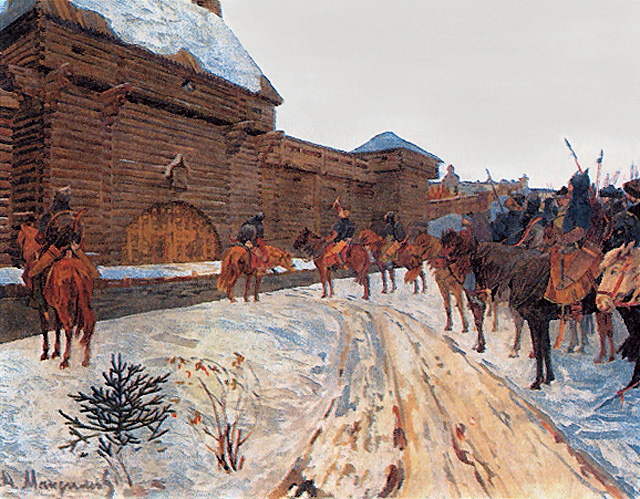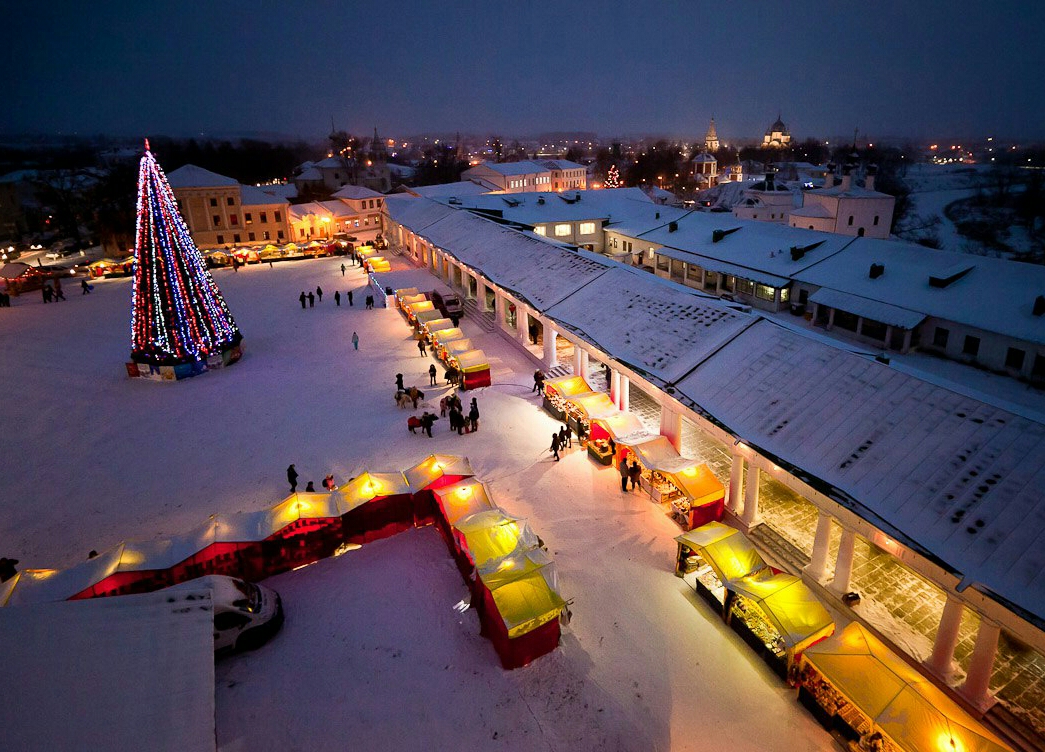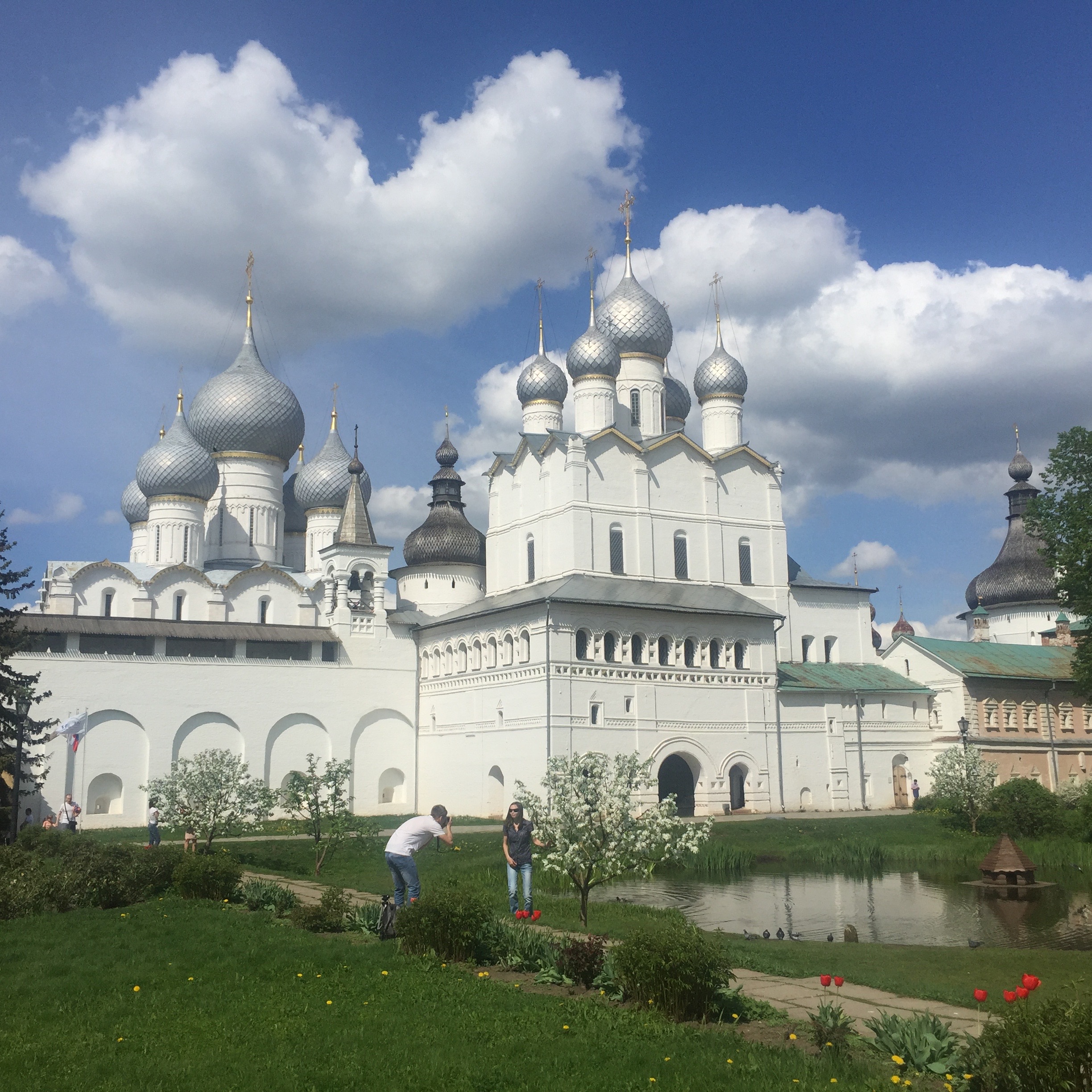|
Vsevolod III Of Kiev
Vsevolod III Yuryevich, or Vsevolod the Big Nest ( rus, –í—Ā–ĶŐĀ–≤–ĺ–Ľ–ĺ–ī III –ģŐĀ—Ä—Ć–Ķ–≤–ł—á –Ď–ĺ–Ľ—Ć—ą–ĺŐĀ–Ķ –ď–Ĺ–Ķ–∑–ī–ĺŐĀ, Vs√©volod III Y√ļr'yevich Bol'sh√≥ye Gnezd√≥) (1154‚Äď1212), was Grand Prince of Vladimir from 1176 to 1212. During his long reign the city reached the zenith of its glory. Family Vsevolod was the tenth or eleventh son of Yuri Dolgoruky (c. 1099 ‚Äď 1157), who founded the town Dmitrov to commemorate the site of Vsevolod's birth. Nikolai Karamzin (1766 ‚Äď 1826) initiated the speculation identifying Vsevolod's mother Helene as a Greek princess, because after her husband's death she took Vsevolod with her to Constantinople. Vsevolod spent his youth at the chivalric court of the Komnenoi. On his return from the Byzantine Empire to Rus' in 1170, Vsevolod supposedly visited Tbilisi, as a local chronicle records that that year the Georgian king entertained his nephew from Constantinople and married him to his relative, an Ossetian princess. Reign In 1173 ... [...More Info...] [...Related Items...] OR: [Wikipedia] [Google] [Baidu] |
Rurik Dynasty
The Rurik dynasty ( be, –†—ÉŐĀ—Ä—č–ļ–į–≤—Ė—á—č, R√ļrykavichy; russian: –†—éŐĀ—Ä–ł–ļ–ĺ–≤–ł—á–ł, Ry√ļrikovichi, ; uk, –†—éŐĀ—Ä–ł–ļ–ĺ–≤–ł—á—Ė, Ri√ļrykovychi, ; literally "sons/scions of Rurik"), also known as the Rurikid dynasty or Rurikids, was a noble lineage founded by the Varangian prince Rurik, who established himself in Novgorod around the year AD 862. The Rurikids were the ruling dynasty of Kievan Rus' (after the conquest of Kiev by Oleg of Novgorod in 882) before it finally disintegrated in the mid-13th century, as well as the successor Rus' principalities and Rus' prince republics of Novgorod, Pskov, Vladimir-Suzdal, Ryazan, Smolensk, Galicia-Volhynia (after 1199), Chernigov, and the Grand Duchy of Moscow (from 1263). Following the disintegration of Kievan Rus', the most powerful state to eventually arise was the Grand Duchy of Moscow, initially a part of Vladimir-Suzdal, which, along with the Novgorod Republic, established the basis of the modern Russian natio ... [...More Info...] [...Related Items...] OR: [Wikipedia] [Google] [Baidu] |
Georgia (country)
Georgia (, ; ) is a transcontinental country at the intersection of Eastern Europe and Western Asia. It is part of the Caucasus region, bounded by the Black Sea to the west, by Russia to the north and northeast, by Turkey to the southwest, by Armenia to the south, and by Azerbaijan to the southeast. The country covers an area of , and has a population of 3.7 million people. Tbilisi is its capital as well as its largest city, home to roughly a third of the Georgian population. During the classical era, several independent kingdoms became established in what is now Georgia, such as Colchis and Iberia. In the early 4th century, ethnic Georgians officially adopted Christianity, which contributed to the spiritual and political unification of the early Georgian states. In the Middle Ages, the unified Kingdom of Georgia emerged and reached its Golden Age during the reign of King David IV and Queen Tamar in the 12th and early 13th centuries. Thereafter, the kingdom decl ... [...More Info...] [...Related Items...] OR: [Wikipedia] [Google] [Baidu] |
Saint Demetrios De Thessalonique
In religious belief, a saint is a person who is recognized as having an exceptional degree of holiness, likeness, or closeness to God. However, the use of the term ''saint'' depends on the context and denomination. In Catholic, Eastern Orthodox, Anglican, Oriental Orthodox, and Lutheran doctrine, all of their faithful deceased in Heaven are considered to be saints, but some are considered worthy of greater honor or emulation. Official ecclesiastical recognition, and consequently a public cult of veneration, is conferred on some denominational saints through the process of canonization in the Catholic Church or glorification in the Eastern Orthodox Church after their approval. While the English word ''saint'' originated in Christianity, historians of religion tend to use the appellation "in a more general way to refer to the state of special holiness that many religions attribute to certain people", referring to the Jewish tzadik, the Islamic walńę, the Hindu rishi or Sikh gur ... [...More Info...] [...Related Items...] OR: [Wikipedia] [Google] [Baidu] |
Kiev
Kyiv, also spelled Kiev, is the capital and most populous city of Ukraine. It is in north-central Ukraine along the Dnieper, Dnieper River. As of 1 January 2021, its population was 2,962,180, making Kyiv the List of European cities by population within city limits, seventh-most populous city in Europe. Kyiv is an important industrial, scientific, educational, and cultural center in Eastern Europe. It is home to many High tech, high-tech industries, higher education institutions, and historical landmarks. The city has an extensive system of Transport in Kyiv, public transport and infrastructure, including the Kyiv Metro. The city's name is said to derive from the name of Kyi, one of its four legendary founders. During History of Kyiv, its history, Kyiv, one of the oldest cities in Eastern Europe, passed through several stages of prominence and obscurity. The city probably existed as a commercial center as early as the 5th century. A Slavs, Slavic settlement on the great trade ... [...More Info...] [...Related Items...] OR: [Wikipedia] [Google] [Baidu] |
Chernigov
Chernihiv ( uk, –ß–Ķ—Ä–Ĺ—ĖŐĀ–≥—Ė–≤, , russian: –ß–Ķ—Ä–Ĺ–łŐĀ–≥–ĺ–≤, ; pl, Czernih√≥w, ; la, Czernihovia), is a List of cities in Ukraine, city and List of hromadas of Ukraine, municipality in northern Ukraine, which serves as the administrative center of Chernihiv Oblast and Chernihiv Raion within the oblast. Chernihiv's population is The city was designated as a Hero City of Ukraine, Hero City during the 2022 Russian invasion of Ukraine, 2022 Russian Invasion of Ukraine. Geography Chernihiv stands on the Desna River to the north-north-east of Kyiv. The area was served by Chernihiv Shestovitsa Airport, Chernihiv Shestovytsia Airport prior to 2002, and during the Cold War it was the site of Chernihiv (air base), Chernihiv air base. History Etymology The name "Chernihiv" is a compound name, which begins with the root 'Cherni/Cherno,' which means "black" in Slavic. Scholars vary with interpretations of the second part of the name ("hiv"/gov", "–≥–ĺ–≤—ä") though scholars suc ... [...More Info...] [...Related Items...] OR: [Wikipedia] [Google] [Baidu] |
Novgorod
Veliky Novgorod ( rus, links=no, –í–Ķ–Ľ–ł–ļ–ł–Ļ –Ě–ĺ–≤–≥–ĺ—Ä–ĺ–ī, t=Great Newtown, p=v ≤…™ňąl ≤ik ≤…™j ňąnov…°…ôr…ôt), also known as just Novgorod (), is the largest city and administrative centre of Novgorod Oblast, Russia. It is one of the oldest cities in Russia, being first mentioned in the 9th century. The city lies along the Volkhov River just downstream from its outflow from Lake Ilmen and is situated on the M10 federal highway connecting Moscow and Saint Petersburg. UNESCO recognized Novgorod as a World Heritage Site in 1992. The city has a population of At its peak during the 14th century, the city was the capital of the Novgorod Republic and was one of Europe's largest cities. The "Veliky" ("great") part was added to the city's name in 1999. History Early developments The Sofia First Chronicle makes initial mention of it in 859, while the Novgorod First Chronicle first mentions it in 862, when it was purportedly already a major Baltics-to- Byzantium station on t ... [...More Info...] [...Related Items...] OR: [Wikipedia] [Google] [Baidu] |
Volga Bulgaria
Volga Bulgaria or Volga‚ÄďKama Bulgaria, was a historic Bulgar state that existed between the 7th and 13th centuries around the confluence of the Volga and Kama River, in what is now European Russia. Volga Bulgaria was a multi-ethnic state with large numbers of Turkic Bulgars, a variety of Finnic and Ugric peoples, and many East Slavs. Its strategic position of allowed it to create a monopoly between the trade of Arabs, Norse and Avars. History Origin and creation of the state The Bulgars were Turkic tribes of Oghuric origin, who settled north of the Black Sea. During their westward migration across the Eurasian steppe, they came under the overlordship of the Khazars, leading other ethnic groups, including Finnic and Iranic peoples. In about 630 they founded Old Great Bulgaria, which was destroyed by the Khazars in 668. Kubrat's son and appointed heir, Batbayan Bezmer, moved from the Azov region in about AD 665, commanded by the Kazarig Khagan Kotrag, to whom he had ... [...More Info...] [...Related Items...] OR: [Wikipedia] [Google] [Baidu] |
Vladimir, Russia
Vladimir ( rus, –í–Ľ–į–ī–łŐĀ–ľ–ł—Ä, p=vl…ź'd ≤im ≤…™r, a=Ru-–í–Ľ–į–ī–ł–ľ–ł—Ä.ogg) is a city and the administrative center of Vladimir Oblast, Russia, located on the Klyazma River, east of Moscow. It is served by a railway and the M7 motorway. Population: History Vladimir was one of the medieval capitals of Russia, with significant buildings surviving from the 12th century. Two of its Russian Orthodox cathedrals, a monastery, and associated buildings have been designated as among the White Monuments of Vladimir and Suzdal, a UNESCO World Heritage Site. In the past, the city was also known as Vladimir-on-Klyazma () and Vladimir-Zalessky (), to distinguish it from another Vladimir in Volhynia (modern Ukraine). Foundation The founding date of Vladimir is disputed between 990 and 1108. In the ''Novgorod First Chronicle'', Vladimir is mentioned under the year 1108, and during the Soviet period, this year was decreed to be its foundation year with the view that attributes the fou ... [...More Info...] [...Related Items...] OR: [Wikipedia] [Google] [Baidu] |
Suzdal
Suzdal ( rus, –°—É–∑–ī–į–Ľ—Ć, p=ňąsuzd…ôl ≤) is a town that serves as the administrative center of Suzdalsky District in Vladimir Oblast, Russia, which is located on the Kamenka River, north of the city of Vladimir. Vladimir is the administrative center of the surrounding oblast. As of the 2021 Census, its population was 9,286. Suzdal is one of the oldest Russian towns. In the 12th century, it became the capital of the principality, while Moscow was merely one of its subordinate settlements. Currently, Suzdal is the smallest of the Russian Golden Ring towns, but it has more than 40 historically important monuments and 200 architectural sites. Several of these sites are listed as UNESCO World Heritage Sites. History The town's history dates back probably to 999 or 1024, and in 1125 Yury Dolgoruky made Suzdal the capital of the Rostov-Suzdal principality. Suzdal began to function as a capital at the time when Moscow was still a cluster of cowsheds. In 1157, Andrei Bog ... [...More Info...] [...Related Items...] OR: [Wikipedia] [Google] [Baidu] |
Rostov
Rostov ( rus, –†–ĺ—Ā—ā–ĺŐĀ–≤, p=r…źňąstof) is a town in Yaroslavl Oblast, Russia, one of the oldest in the country and a tourist center of the Golden Ring. It is located on the shores of Lake Nero, northeast of Moscow. Population: While the official name of the town is Rostov, it is popularly known to Russians as Rostov Veliky ( rus, –†–ĺ—Ā—ā–ĺ–≤ –í–Ķ–Ľ–ł–ļ–ł–Ļ, ''Rostov the Great'') to distinguish it from the much larger city of Rostov-on-Don. The name of the town railway station is Rostov Yaroslavsky, due to its location in Yaroslavl Oblast. History Rostov was preceded by Sarskoye Gorodishche, which some scholars interpret as the capital of the Finnic Merya tribe. Others believe it was an important Viking trade enclave and fortress guarding the Volga trade route. It is known from Norse sources as Ra√įstofa. Scythians also settled there. These different ethnicities, such as the Vikings, Scyths, Slavs and Finns, were likely the ancestors of many of today's people in that ... [...More Info...] [...Related Items...] OR: [Wikipedia] [Google] [Baidu] |
Boyar
A boyar or bolyar was a member of the highest rank of the Feudalism, feudal nobility in many Eastern European states, including Kievan Rus', Bulgarian Empire, Bulgaria, Russian nobility, Russia, Boyars of Moldavia and Wallachia, Wallachia and Moldavia, and later Romania, Lithuanian nobility, Lithuania and among Baltic German nobility, Baltic Germans. Boyars were second only to the ruling knyaz, princes (in Bulgaria, tsars) from the 10th century to the 17th century. The rank has lived on as a surname in Russia, Finland, Lithuania and Latvia where it is spelled ''Pajari'' or ''BajńĀrs/-e''. Etymology Also known as bolyar; variants in other languages include bg, –Ī–ĺ–Ľ—Ź—Ä or ; rus, –Ī–ĺ—ŹŐĀ—Ä–ł–Ĺ, r=boyarin, p=b…źňąj√¶r ≤…™n; ; ro, boier, ; and el, ő≤őŅő≥őĻő¨ŌĀőŅŌā. The title Boila is predecessor or old form of the title Bolyar (the Bulgarian language, Bulgarian word for Boyar). Boila was a title worn by some of the Bulgars, Bulgar aristocrats (mostly of regional governors a ... [...More Info...] [...Related Items...] OR: [Wikipedia] [Google] [Baidu] |
Mikhail Of Vladimir
Mikhalko Yuryevich (russian: –ú–ł—Ö–į–Ľ–ļ–ĺ (–ú–ł—Ö–į–ł–Ľ) –ģ—Ä—Ć–Ķ–≤–ł—á; uk, –ú–ł—Ö–į–Ļ–Ľ–ĺ –ģ—Ä—Ė–Ļ–ĺ–≤–ł—á) (died June 20, 1176), Prince of Torchesk (mid-1160s‚Äď1173), Vladimir and Suzdal (1175‚Äď1176) and Grand Prince of Kiev (Kyiv, 1171). Yuri Dolgoruky's eldest son by his second marriage, Mikhalko Yuryevich was removed from the Suzdal lands by his half-brother Andrei Bogolyubsky, who apparently disliked his mother. From 1162 to 1169 he lived in Ostyor, a small town near Chernigov, but then moved on to a town of Torchesk. Appointed by Andrei to rule Kiev upon the death of Gleb Yuriyevich in 1171, Mikhalko refused to take the throne and sent his younger brother Vsevolod to Kiev instead. He was besieged in Torchesk by another claimant to Kiev, Yaropolk Rostislavich, but concluded peace with him and was allowed to move his capital to Pereiaslav. The starving of his subjects prompted Mikhail's surrender after a week of holding the city. Next year, when Andrei invaded Southern ... [...More Info...] [...Related Items...] OR: [Wikipedia] [Google] [Baidu] |



.jpg)
.jpg)




_-_contrast.jpg)